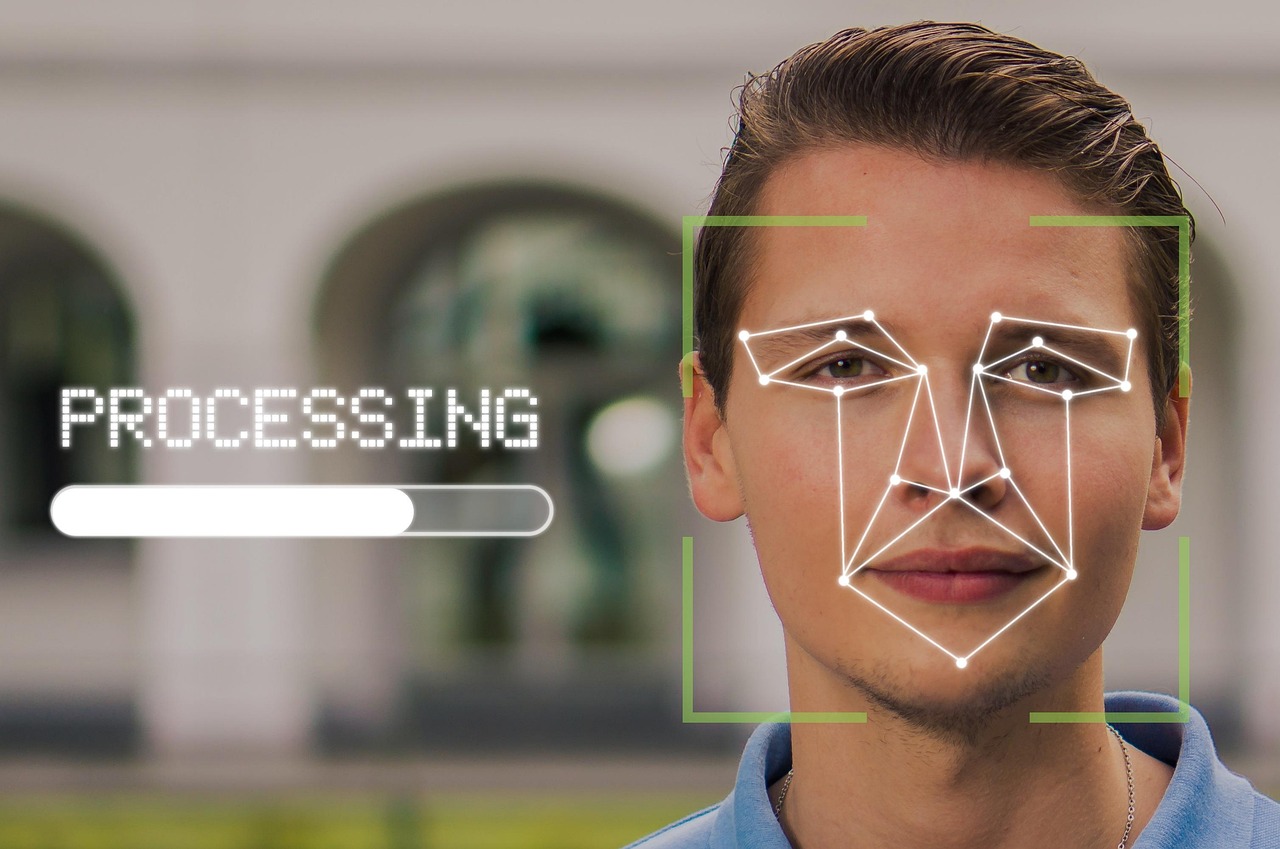El informe The Digital Case Officer: Reimagining Espionage with Artificial Intelligence representa una de las más ambiciosas reflexiones contemporáneas sobre la convergencia entre la inteligencia humana (HUMINT) y la inteligencia artificial (IA). Publicado por el Special Competitive Studies Project en 2025, el documento postula que la comunidad de inteligencia estadounidense se encuentra ante un cambio de paradigma comparable a la irrupción de Internet en la década de 1990. Su tesis central sostiene que la IA, particularmente los modelos generativos, multimodales y agénticos, puede revolucionar el ciclo de reclutamiento, desarrollo y manejo de fuentes humanas, inaugurando una forma de “cuarta generación del espionaje” donde los humanos y las máquinas actúan como un solo equipo operativo (Special Competitive Studies Project 2025, 4–6).
La lectura del informe revela un profundo entendimiento de los desafíos que el entorno digital impone a la práctica de la inteligencia. El texto acierta al reconocer que el valor esencial de la HUMINT no radica en la recopilación de datos observables, tarea donde los sistemas técnicos ya superan al ser humano, sino en la obtención del intento de los actores, es decir, la comprensión de las motivaciones, percepciones y decisiones que solo una fuente humana puede revelar (Special Competitive Studies Project 2025, 13–14). Esta distinción ontológica entre acción e intención preserva la relevancia del agente humano en la era algorítmica. Asimismo, el informe identifica con precisión el fenómeno de la vigilancia técnica ubicua, una realidad que amenaza con borrar el anonimato sobre el que se erigió el espionaje tradicional. Con ello, los autores contextualizan la urgencia de adaptar la profesión a un entorno donde toda huella digital puede delatar la identidad de un oficial de inteligencia.
Aciertos conceptuales: la integración estratégica de IA y HUMINT
Uno de los mayores méritos del documento reside en su capacidad para imaginar escenarios de uso concreto de la IA en las operaciones HUMINT. A través de la narrativa del sistema ficticio MARA, el informe ilustra cómo un agente digital podría analizar grandes volúmenes de datos abiertos y clasificados para identificar candidatos a reclutamiento, entablar contacto inicial mediante personalidades sintéticas y mantener diálogos persuasivos con cientos de potenciales fuentes en paralelo (Special Competitive Studies Project 2025, 8–9). Este ejercicio de prospectiva tecnológica cumple un doble propósito: por un lado, dimensiona la magnitud de la revolución que implicará la IA generativa; por otro, proporciona a los planificadores institucionales una guía pragmática sobre las capacidades y riesgos operativos que deben anticipar.
El texto también acierta al subrayar el principio de Meaningful Human Control (MHC), tomado de los debates éticos sobre armas autónomas, como fundamento normativo para el uso responsable de IA en inteligencia (Special Competitive Studies Project 2025, 24–25). Según este principio, toda decisión que conlleve riesgo humano, como el reclutamiento, la tarea operativa o el manejo de una fuente, debe estar sujeta a supervisión y responsabilidad de un oficial. De este modo, el informe equilibra el entusiasmo tecnológico con una defensa clara de la agencia moral humana.
Asimismo, la obra es sobresaliente al analizar el panorama competitivo internacional. En su Appendix A, el SCSP detalla cómo potencias como China y Rusia ya experimentan con IA generativa para optimizar sus operaciones de influencia, reclutamiento y contrainteligencia (Special Competitive Studies Project 2025, 34–35). El diagnóstico geoestratégico es convincente: los adversarios estadounidenses han comprendido que la IA no solo amplía la capacidad de vigilancia, sino que redefine la estructura misma de la competencia entre servicios de inteligencia. En consecuencia, la pasividad tecnológica equivaldría a la obsolescencia.
Por último, el informe acierta al considerar la dimensión psicológica del espionaje digital. Reconoce que, pese al poder de la automatización, la confianza, la empatía y la gestión emocional siguen siendo atributos exclusivamente humanos. El caso del activo que necesita una relación personal con su oficial para sostener el compromiso con una misión peligrosa, y que podría sentirse traicionado al descubrir que interactuaba con una máquina, demuestra una sensibilidad ética rara vez presente en documentos técnicos de inteligencia (Special Competitive Studies Project 2025, 17–18).
Debilidades conceptuales y metodológicas
A pesar de su sofisticación analítica, el informe presenta varias limitaciones que deben señalarse con rigor académico. Cuatro de ellas son especialmente relevantes: una sobre el alcance ontológico de la IA agéntica, otra sobre la ética instrumental de la manipulación emocional, una tercera sobre la fiabilidad epistemológica de la IA como agente operativo y una cuarta sobre la falta de análisis político de la gobernanza interinstitucional.
Ambigüedad conceptual del oficial digital
El documento define al Digital Case Officer como un sistema agéntico capaz de planificar y ejecutar tareas de reclutamiento con mínima intervención humana. Sin embargo, no ofrece una definición operativa precisa de agencia en el contexto de inteligencia. La noción de autonomía se confunde con la de automatización avanzada: un algoritmo que ejecuta secuencias de diálogo o identifica patrones de vulnerabilidad no es, en sentido filosófico, un agente moral ni un decisor autónomo. Autores como Floridi (2023) y Gunkel (2024) advierten que atribuir agencia a sistemas algorítmicos puede generar ilusiones de responsabilidad desplazada, donde los errores técnicos se interpretan como decisiones de una entidad inexistente. El informe incurre parcialmente en este antropomorfismo tecnológico, lo que debilita su fundamento teórico sobre el control humano y la responsabilidad ética. Una reformulación debería distinguir entre autonomía funcional, entendida como capacidad de operar sin supervisión inmediata, y autonomía decisional, reservando esta última exclusivamente al ser humano.
La ética de la manipulación emocional
El informe justifica el uso de affective computing y modelos conversacionales capaces de detectar y responder a emociones humanas para fortalecer la empatía simulada del oficial digital (Special Competitive Studies Project 2025, 15–16). Si bien reconoce los riesgos de manipulación, sugiere que el problema puede mitigarse mediante líneas rojas éticas y adecuada supervisión. No obstante, esta solución resulta insuficiente. La psicología moral y la ética de la persuasión, desde Kant hasta Habermas, sostienen que simular afecto con fines instrumentales constituye una forma de engaño que instrumentaliza la dignidad humana. Aun si se respetara el principio de MHC, la creación de vínculos emocionales falsos mediante algoritmos erosiona la confianza, fundamento mismo de la relación entre oficial y fuente. Una ética del espionaje digital debería incorporar explícitamente límites deontológicos que prohíban la simulación afectiva con fines coercitivos o de manipulación psicológica profunda.
Fiabilidad epistemológica y sesgos de la IA
Otro problema subestimado es la fiabilidad epistemológica de los modelos generativos como herramientas de reclutamiento. El informe reconoce la existencia de cajas negras algorítmicas que dificultan explicar por qué la IA selecciona un objetivo determinado (Special Competitive Studies Project 2025, 23–24), pero no desarrolla las implicaciones operativas de esa opacidad. En inteligencia, la trazabilidad y la validación de fuentes son pilares del proceso analítico. Si el sistema no puede justificar por qué considera reclutable a un individuo, por ejemplo, si interpreta erróneamente un gesto irónico en redes sociales como disidencia, el riesgo de falsos positivos es inmenso. Además, los modelos de lenguaje están entrenados sobre datos que reflejan sesgos culturales, raciales o ideológicos. En el contexto HUMINT, tales sesgos podrían conducir a la persecución selectiva de grupos o individuos inocentes. El informe debió profundizar en los mecanismos de auditoría algorítmica y control de sesgos que garanticen una epistemología verificable de la IA operativa.
Vacíos de gobernanza interinstitucional
La cuarta debilidad reside en la insuficiente problematización política del marco de gobernanza. Aunque el informe propone medidas de supervisión, auditorías, responsables humanos designados e informes al Congreso, no examina las tensiones burocráticas y jurisdiccionales que históricamente han obstaculizado la cooperación entre agencias como la CIA, el FBI y la NSA. La sugerencia de ofrecer “HUMINT as a Service” para otras agencias es innovadora, pero no se analiza cómo se resolverían los conflictos de autoridad, control de datos o responsabilidad legal ante errores operativos (Special Competitive Studies Project 2025, 29–30). Tampoco se contempla el papel de aliados extranjeros en la compartición de tecnologías sensibles. En un contexto de creciente desconfianza transatlántica y vigilancia cibernética, estas omisiones son significativas. Cualquier marco de inteligencia artificial aplicado a HUMINT debe incorporar un análisis institucional robusto sobre cómo preservar la rendición de cuentas dentro de una comunidad caracterizada por la compartimentación y el secreto.
El impacto psicológico en los agentes humanos
Una debilidad adicional, apenas insinuada, es la falta de atención al impacto psicológico de la hibridación humano máquina sobre los propios oficiales de caso. El informe alude brevemente al peso psicológico del espionaje en un entorno de transparencia total (Special Competitive Studies Project 2025, 17–18), pero no analiza cómo la dependencia operativa de algoritmos puede afectar la identidad profesional, la moral o el juicio ético del oficial. Estudios recientes en neuroergonomía y psicología del trabajo demuestran que la sobreautomatización reduce la confianza en el propio criterio y fomenta una delegación pasiva de la responsabilidad moral (Cummings 2024; Krupnikov 2025). En un oficio donde el discernimiento moral y la intuición interpersonal son esenciales, tal degradación cognitiva tendría consecuencias graves. La gobernanza de la IA en inteligencia debería contemplar programas de resiliencia psicológica y entrenamiento ético para preservar la autonomía moral de los oficiales.
Implicaciones estratégicas y éticas
Más allá de sus debilidades, el informe plantea preguntas fundamentales sobre la ontología del espionaje en el siglo XXI. Si la IA puede simular empatía, gestionar identidades virtuales y ejecutar tareas de persuasión, ¿sigue siendo la HUMINT una relación humana? El documento responde afirmativamente, defendiendo la noción del equipo humano máquina. Sin embargo, el riesgo de deshumanización es real: cuanto más eficaz sea la IA en emular la confianza, más fácil será reemplazar al humano en las etapas iniciales de contacto. Este dilema ético recuerda las advertencias de Shulman (2023), quien argumenta que la automatización de la interacción moral puede generar alienación operacional, un estado en el que los agentes ya no perciben las consecuencias humanas de sus acciones.
Desde una perspectiva estratégica, el modelo propuesto por el SCSP redefine la escala y el ritmo de las operaciones HUMINT. Un solo oficial, asistido por una red de IA, podría interactuar con cientos de objetivos en paralelo, multiplicando exponencialmente el alcance del espionaje. Pero esta misma escalabilidad erosiona los controles tradicionales basados en la supervisión directa. En un entorno donde la velocidad de interacción supera la capacidad humana de revisión, el riesgo de abusos o errores sistémicos aumenta. La historia de la inteligencia demuestra que los fallos no provienen solo de malas intenciones, sino de la combinación de exceso de confianza tecnológica y déficit de deliberación moral.
Hacia una epistemología prudente de la inteligencia artificial
La integración de IA en la práctica del espionaje exige una nueva epistemología prudente, basada en tres principios rectores: transparencia algorítmica, responsabilidad humana y proporcionalidad moral.
En primer lugar, la transparencia implica desarrollar sistemas explicables cuya lógica decisional pueda auditarse en tiempo real. Sin explicabilidad, la confianza institucional se convierte en fe ciega. En segundo lugar, la responsabilidad humana debe ser indivisible. El principio de MHC no debe reducirse a un trámite de aprobación, sino concebirse como una forma de coautoría moral entre humano y máquina, donde el primero mantiene dominio sobre el propósito y el significado de la acción. En tercer lugar, la proporcionalidad exige evaluar el costo moral de cada innovación: la capacidad de hacer más no justifica automáticamente hacerlo todo.
Adoptar estos principios requerirá reformas legales y culturales. A nivel normativo, el Congreso y el Poder Ejecutivo deberían actualizar la Orden Ejecutiva 12333 para definir explícitamente la naturaleza jurídica de los sistemas autónomos de inteligencia y su relación con los derechos civiles de los ciudadanos estadounidenses. A nivel institucional, las academias de inteligencia deberían incorporar formación en ética de IA y filosofía de la tecnología, equipando a los futuros oficiales con herramientas críticas para resistir la automatización acrítica del juicio moral.
Finalmente, el debate sobre el Digital Case Officer invita a reconsiderar la esencia misma del espionaje. Si el futuro de la inteligencia es híbrido, su éxito no dependerá solo de la potencia computacional, sino de la capacidad de mantener el núcleo humanista del oficio. Como advirtió Richard Moore, director del MI6, “la relación que permite que una persona confíe genuinamente en otra sigue siendo obstinadamente humana” (Moore 2023). Esta afirmación resume la paradoja que el informe del SCSP plantea sin resolver plenamente: la tecnología puede ampliar la inteligencia, pero solo el ser humano puede darle propósito moral.
Referencias
Cummings, Mary L. 2024. “Automation and the Erosion of Human Judgment in Defense Systems.” Journal of Military Ethics 23 (2): 101–120.
Floridi, Luciano. 2023. The Ethics of Artificial Agents. Oxford: Oxford University Press.
Gunkel, David. 2024. The Machine Question Revisited: AI and Moral Agency. Cambridge, MA: MIT Press.
Krupnikov, Andrei. 2025. “Psychological Implications of Human Machine Teaming in Intelligence Work.” Intelligence and National Security 40 (3): 215–233.
Moore, Richard. 2023. “Speech by Sir Richard Moore, Head of SIS.” London: UK Government.
Shulman, Peter. 2023. “Operational Alienation in Autonomous Warfare.” Ethics & International Affairs 37 (4): 442–460.
Special Competitive Studies Project. 2025. The Digital Case Officer: Reimagining Espionage with Artificial Intelligence. Washington, D.C.: SCSP Press.



